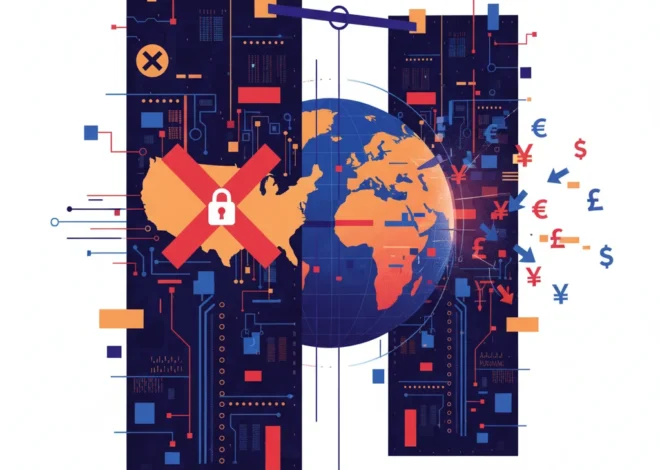
The Great Auto-Shift: Why a Shipping CEO’s Warning Spells a New Era for Global Markets
A Tectonic Shift on the High Seas
Imagine the deck of a colossal car-carrier vessel, the size of several football fields, slicing through the ocean. For decades, these ships leaving Asian ports were predominantly filled with Japanese and Korean brands, while those departing Europe carried the prestigious badges of Germany, France, and Italy. Today, that picture is fundamentally changing. The ships leaving ports like Shanghai and Shenzhen are now brimming with vehicles from brands many Western consumers are just beginning to recognize—BYD, Nio, and Xpeng. This isn’t just a change in cargo; it’s a visual confirmation of a seismic shift in the global economic order.
This isn’t an analyst’s prediction or a distant forecast. This is the on-the-ground reality reported by the person with arguably the best view of global automotive trade: the chief executive of the world’s largest car-shipping operator. Lasse Kristoffersen, CEO of Wallenius Wilhelmsen, recently delivered a stark message that should resonate in boardrooms and trading floors from Frankfurt to Detroit. In a statement to the Financial Times, he declared, “The Chinese car manufacturers are extremely competitive… They are overtaking the Europeans.”
This blog post delves into this transformative trend, exploring what it means for the automotive industry, the global economy, and crucial sectors like finance and investing. We will unpack the data behind China’s rise, analyze the strategic responses from both new and legacy players, and assess the profound implications for the international stock market.
The View from the Captain’s Bridge: A Harbinger of Change
When the leader of a company that physically moves the world’s cars speaks, investors should listen. Wallenius Wilhelmsen isn’t just a shipping line; it’s a barometer for global manufacturing and consumer demand. Kristoffersen’s perspective is not based on market research reports but on vessel manifests and logistics contracts. His company is so confident in this new world order that it’s building a core part of its future strategy around it: boosting revenue by providing end-to-end logistical support to help these emerging Chinese brands conquer overseas markets.
This strategic pivot is telling. It signals a belief that this is not a cyclical trend but a structural one. Wallenius Wilhelmsen is positioning itself as the logistical backbone for China’s automotive export machine. This move highlights a crucial aspect of modern global trading: success is no longer just about manufacturing a superior product. It’s about navigating an increasingly complex web of supply chains, customs, and distribution networks—a service that established logistics giants can provide, creating a symbiotic relationship that accelerates the global expansion of these new automotive powerhouses.
By the Numbers: China’s Unprecedented Automotive Ascent
The anecdotal evidence from the shipping lanes is powerfully backed by hard data. In a historic shift, China surpassed Japan as the world’s number one car exporter in 2023 (source). This milestone wasn’t achieved overnight but is the culmination of decades of state-led industrial policy, massive investment in electric vehicle (EV) technology, and the cultivation of a hyper-competitive domestic market.
To put this rapid ascent into perspective, consider the key players and their global ambitions.
| Chinese Automaker | Key Differentiator | Global Expansion Strategy |
|---|---|---|
| BYD (Build Your Dreams) | Vertically integrated EV and battery manufacturer, offering competitive pricing and technology (e.g., Blade Battery). | Aggressively entering markets in Europe, Southeast Asia, and Latin America with a wide range of EV models. |
| Nio | Premium EV brand focusing on innovation, user experience, and unique technologies like battery-swapping stations. | Targeting the premium segment in Europe, starting with countries like Norway, Germany, and the Netherlands. |
| Xpeng | Focus on smart EV technology, advanced driver-assistance systems (ADAS), and software integration. | Expanding into several European markets, emphasizing its tech-forward branding to attract a younger demographic. |
This table illustrates that China’s export boom is not monolithic. It is a multi-pronged assault across different market segments, from the mass-market appeal of BYD to the premium, tech-focused offerings of Nio and Xpeng. This diversity is a key reason why their collective impact is reshaping the fundamentals of the auto industry’s economics.
This is a far more complex and capital-intensive battle. It’s not just about building a better car; it’s about mastering battery chemistry, semiconductor supply chains, and user-interface software. Furthermore, the geopolitical climate is vastly different. While trade tensions existed in the 80s, today’s environment is defined by a strategic rivalry between the US and China, with Europe caught in the middle. This adds a layer of political risk—tariffs, sanctions, and regulatory hurdles—that Japanese brands never faced to the same degree. For investors, this means the risk-reward calculation is far more intricate. The potential for explosive growth in these Chinese stocks is tempered by the potential for sudden, politically motivated market shocks.
The Geopolitical and Financial Battlefield
The road to global dominance for Chinese automakers is not without significant obstacles. While their products are increasingly competitive, they face deep-seated challenges that extend beyond the factory floor into the realms of international relations and finance.
- Brand Recognition and Trust: In mature markets, brands like Volkswagen, BMW, and Ford have spent a century building reputations for quality, safety, and reliability. Chinese automakers must overcome consumer skepticism and build trust from a near-zero base, a process that requires immense marketing investment and time.
- The Tariff Wall: The most significant headwind is political. The European Union has already launched an anti-subsidy investigation into Chinese EV imports (source), which could result in punitive tariffs. The United States has already imposed steep tariffs. This protectionism could slow down the export momentum and force Chinese companies to invest in local manufacturing, a costly and complex alternative.
- Navigating Global Logistics: As Wallenius Wilhelmsen’s strategy shows, managing a global supply chain is a monumental task. For newer companies, this can be a daunting operational and financial burden. The efficiency of the global banking and trade finance system is critical here. Innovations in financial technology (fintech), and even nascent technologies like blockchain for supply chain verification, could play a role in helping these new giants manage their global footprint.
These challenges create a complex strategic landscape. Success will depend not only on engineering prowess but also on diplomatic skill, financial resilience, and logistical excellence.
Market Tremors: Analyzing the Financial Fallout of a Public Safety Crisis
Investment Implications: A New Map for the Auto Stock Market
For those involved in investing and trading, this industrial shift is creating both immense opportunities and significant risks. The traditional auto sector, a cornerstone of many investment portfolios, is facing its most profound disruption in a century.
- Re-evaluating Legacy Automakers: The market valuations of traditional European, American, and Japanese automakers are now under intense scrutiny. Investors must ask tough questions: Can they transition their manufacturing base, workforce, and brand identity to the EV era quickly enough to compete? Their performance on the stock market increasingly hinges on the credibility of their electrification strategies.
- The High-Growth, High-Risk Chinese Plays: Investing directly in companies like BYD or Nio offers exposure to the heart of this growth trend. However, this comes with heightened volatility and geopolitical risk. Accounting standards, corporate governance, and the potential for regulatory crackdowns by Beijing are all factors that must be priced in.
- Ancillary and “Picks and Shovels” Opportunities: A more diversified approach is to invest in the ecosystem supporting this shift. This includes:
- Shipping and Logistics: Companies like Wallenius Wilhelmsen stand to benefit directly from the sheer volume of trade.
- Raw Materials: The demand for lithium, cobalt, and nickel is intrinsically linked to EV growth.
- Semiconductors and Software: The modern car is a computer on wheels, making chip designers and software firms essential players.
- Charging Infrastructure: The global build-out of EV charging networks represents a massive, long-term investment theme.
The core takeaway for investors is that the auto sector is no longer a monolithic, stable industry. It has become a dynamic, technology-driven battleground where the winners and losers of the next decade are being decided right now.
Beyond the Ivory Tower: Why Real-World Impact is the New Gold Standard for Business Schools
The Road Ahead: A New World Order for a Century-Old Industry
The warning from the world’s largest car shipper is not a prediction; it is a declaration of the present. The global automotive industry’s center of gravity has shifted eastward. This transformation, driven by the electric vehicle revolution and underpinned by China’s industrial might, will have cascading effects across the global economy for years to come.
For European giants, the challenge is existential. They must innovate faster, become more agile, and redefine their value proposition in an era where software and battery range are more important than horsepower and engine noise. For policymakers in the West, it raises difficult questions about trade, industrial policy, and national security.
The journey of these vehicles across the ocean on carriers like those operated by Wallenius Wilhelmsen is more than just logistics. It is the physical manifestation of a new economic reality. For business leaders, finance professionals, and investors, the message is clear: the map of the automotive world has been redrawn. It’s time to learn the new geography.


